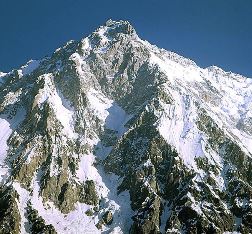
Geological Survey 1920-38
In 1920, the Geological Survey of India received authority to increase its compliment of scientific officers from 20 to 32. Wadia was appointed to one of these positions at the relatively late age of 37 in 1921. He was the first Indian to be appointed to the GSI whose degrees came from an Indian university1. At that time, the GSI was mapping in some Himalayan areas where topographic maps at one inch to the mile had become available. Wadia began his career at the GSI by mapping 2000 square miles of the mountainous Poonch State in the Lesser Himalayas and an additional 2100 square miles in the adjacent parts of the Punjab. This formed the basis of his first substantial memoir for the GSI in 1928
3. One of the principal findings of this study was his explanation of the unique knee-bend of the mountain chains around the knot called Nanga Parbat, as the result of the interaction of the Himalaya with the the tongue-like projection of the Archean Shield
1,2,4. The tectonics of the Nanga Parbat Syntaxis have recently been the subject of a Memoir of the Geological Society
5. For his work there, Wadia was awarded the Back Award of the Royal Geographical Society in 1934 and the Lyell Medal of the Geological Society in 1943
2.
In 1930-31, Wadia continued mapping the high ground around Nanga Parbat (peak at 8113m) with only old ½ and 1 inch topographic maps available to him
1,2. He described the mountain as “a peak of arresting grandeur…Its southern flank exposes a rock face whose buttressed cliffs, 12,000ft high, pierce the sky almost in one leap”. Its surrounding slopes were concealed under many square miles of uninterrupted snow fields. Wadia described the Nanga Parbat mountain mass, the central and most commanding feature of the whole district as above 15,000ft (4572m) and “almost inaccessible to the single field geologist, unequipped with elaborate mountaineering outfit, parties of carriers, etc.”
4. However, Wadia was able to deduce the geology of the higher parts of the mountain above the snow line by examining the moraine deposits. On this basis, he considered the geology of the mountain to be “rather simple”: to which his Director replied that it must be rather pleasant to possess the philosophical temperament to regard such complexity as simple
1. Nonetheless, fieldwork in this barren area undertaken at the age of 50 would have required great tenacity
2.